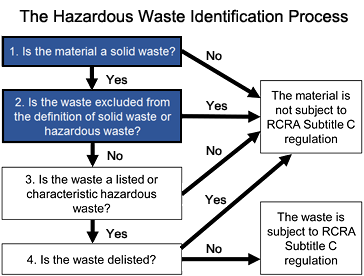Reclaim Waste Things To Know Before You Get This
Reclaim Waste Things To Know Before You Get This
Blog Article
Everything about Reclaim Waste
Table of ContentsThe Ultimate Guide To Reclaim WasteExamine This Report about Reclaim WasteMore About Reclaim WasteThe Facts About Reclaim Waste RevealedSome Known Facts About Reclaim Waste.
Domestic sewer waste refers to the waste and items from a domestic septic storage tank. The correct management and disposal of domestic sewage waste require liquid waste to be transferred to a sewer treatment plant where the correct approaches and devices are used to purify and dispose of waste.
Business waste typically consists of prospective dangers, such as combustible materials or a mix of fluid and strong waste products, and needs an advanced and thorough disposal procedure. The disposal of industrial waste usually involves the filtering of waste before transportation to guarantee secure and proper disposal. Industrial waste is produced from byproducts and runoff of industrial procedures and manufacturing.
This type of waste can not make use of the very same sewer management transportation or processes as septic or industrial liquids. The hazardous waste administration process calls for the assessment and testing of fluid waste before it undertakes the disposal procedure (liquid waste disposal melbourne). Drainage waste is the liquid waste that originates from drainage and excess stormwater in extremely inhabited areas or cities
Drainage waste can trigger contamination and flooding if not dealt with effectively. Find out more concerning drain cleansing and waste monitoring. Making sure proper waste monitoring can stop catastrophes and lower ecological damage. Both people in residential settings and specialists in business or production markets can take advantage of understanding the processes and regulations of fluid waste management.
Reclaim Waste for Dummies
Contact PROS Providers today to discover our waste administration and disposal services and the appropriate methods to take care of the liquid waste you produce.
(https://businesslistingplus.com/profile/reclaimwaste1/)This supposed 'wastewater' is not just an important resource however, after treatment, will be released to our land, waterways or the ocean. Utilized water from commodes, showers, baths, kitchen sinks, laundries and commercial processes is understood as wastewater.

water made use of to cool down machinery or tidy plant and tools). Stormwater, a form of wastewater, is drainage that streams from agricultural and metropolitan locations such as roof coverings, parks, yards, roadways, courses and seamless gutters right into stormwater drains pipes, after rainfall. Stormwater streams neglected straight to local creeks or rivers, eventually getting to the sea.
See This Report about Reclaim Waste
In Queensland, many wastewater is treated at sewage therapy plants. Wastewater is moved from residential or industrial sites with a system of sewers and pump stations, called sewage reticulation, to a sewage treatment plant. Local federal governments build, preserve and run most sewage treatment plants. Operators are accredited under the Environmental Management Act 1994 browse around this site to release cured wastewater at an appropriate environmental criterion right into rivers.
The Department of Natural Resources recommends regional federal governments concerning managing, operating and preserving sewage systems and treatment plants. In unsewered areas, regional governments may call for householders to install specific or home sewer treatment systems to treat residential wastewater from commodes, kitchens, shower rooms and washings. The Division of Natural Resources authorizes using household systems when they are shown to be efficient.
In some brand-new neighborhoods, therapy of some stormwater to remove litter, sand and gravel has started using gross contaminant catches. Wastewater therapy happens in 4 stages: Eliminates solid issue.
Uses little living organisms recognizes as micro-organisms to damage down and remove staying dissolved wastes and fine bits. Micro-organisms and wastes are integrated in the sludge.
The Single Strategy To Use For Reclaim Waste
Nutrient elimination is not offered at all sewer treatment plants because it needs expensive specialist tools. It is ending up being more usual in Queensland. Clear liquid effluent generated after treatment might still contain disease-causing micro-organisms. If this effluent is released right into waterways such as rivers or the sea, the micro-organisms will eventually pass away out.

Most wastewater streams into the sewerage system. Under the Act, neighborhood governments administer authorizations and licences for environmentally appropriate activities (Periods) involving wastewater releases that may have a neighborhood influence.
Reclaim Waste Fundamentals Explained
Monitoring provides valid info about water high quality and can validate that licence conditions are being met. The information gotten via surveillance gives the basis for making water high quality decisions.
Report this page